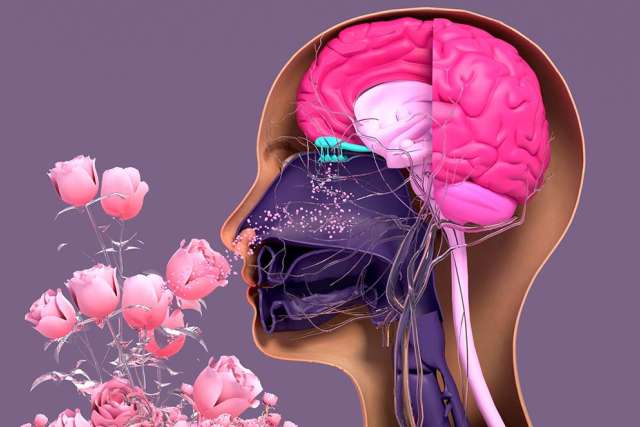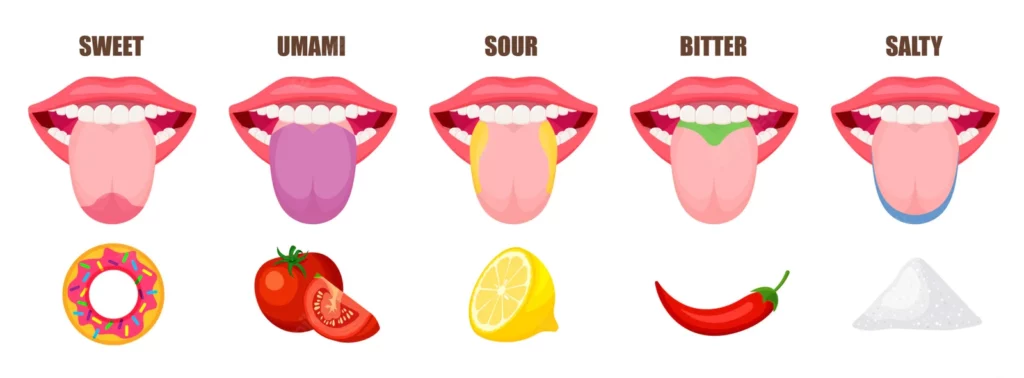
16 Apr ART- 724 -Taste disturbances
Taste is a sense that enables humans to chemically analyze substances that enter our mouths.

Over the millennia, taste helped human bodies avoid foods that were toxic or deadly, thus affecting their survival. Moreover, for humans, tasting allows us to personalize our culinary preferences. Thanks to it, we can recognize stale or spoiled food products, which protects us against dangerous food poisoning.
The sense of taste is one of the five senses in humans (along with sight, hearing, smell and feeling/touch). Taste sensations are a combination of five basic tastes:
bitter,
salty,
sweet,
sour,
umami – the taste of glutamic acid.

Taste sensations are not related to only one sense – the sense of taste. The sense of smell and hearing are also responsible for the perception of taste. It often happens that we forget how closely these two senses are interconnected and how important it is to consider the proper functioning of the sense of smell in the event of taste disorders. It is estimated that the smell is responsible for about 80-90% of the taste. Anosmia is a medical term that describes the inability to sense odors. Anosmia is caused by damage to olfactory cells that are unable to fulfill their function due to trauma or infection.

Taste disturbances are not an uncommon phenomenon. According to statistics, as many as 15% of adults may experience problems with the sense of taste. The following taste disorders are distinguished:
ageusia – complete loss of taste
hypogeusia – impaired (reduced) sense of taste – one or more
hypergeusia – increased sense of taste
dysgeusia – impaired taste perception (sweet, sour, salty, bitter or metallic) in response to a taste stimulus
cacogeusia – experiencing pleasant flavors as unpleasant (e.g. metallic or burnt)
antogeusia / phantoheusia – feeling an unpleasant taste caused by gustatory hallucinations in the absence of any stimulus (so-called gustatory hallucinations)
parageusia – incorrect perception of taste stimuli
aliageusia – feeling unpleasant sensations when receiving taste stimuli.
The causes of taste disorders can be divided into direct and indirect.
In the case of loss of taste or reduced taste sensation, factors influencing the structure of taste structures and their proper functioning are important. Some causes of dysgeusia lead to temporary symptoms, while others may lead to permanent loss of the sense of taste.
Direct causes that impair the sense of taste include smoking and some toxins, including ethyl alcohol. These substances impair the sense of taste by blocking taste receptors.
Taste impairment may also accompany upper respiratory tract infections.
Local inflammations of the oral mucosa and tongue affect the perception of taste buds, while diseases of the salivary glands reduce the amount of saliva secreted, which is needed to break down food into individual chemical substances. Insufficient hydration of taste receptors impairs their function and, consequently, disturbs taste perception.
Dental problems, the use of dentures and insufficient oral hygiene also affect the proper functioning of the sense of taste.
Taste distortion may also be associated with gastroesophageal reflux disease, where stomach contents flow back into the esophagus. This disease is not only associated with swallowing disorders or pain when swallowing. After some time, the accompanying hyperacidity and acidic stomach contents reflected into the esophagus take away the joy of feeling flavors and their correct perception. A similar mechanism occurs in the course of inflammation of the stomach and intestines.
Many drugs affect taste disorders – including diuretics, hormones, angiotensin-converting enzyme inhibitors, and some antibiotics. The principle of the adverse effect of these drugs is to reduce the concentration of zinc in the serum, on which the correct perception of taste depends. If too little zinc in the blood serum is caused by a low supply of this compound in food, a disturbance in the taste of the food consumed may also be observed.
ENT diseases (inflammatory changes in the middle ear and surgery on the middle ear) may cause damage to the tympanic cord. This, in turn, is associated with damage to a branch of the facial nerve, leading to impaired signal transmission to the brain carrying information about taste perception. Any damage to the nerves responsible for transmitting taste impulses to the brain is associated with an impairment of the sense of taste. When the facial nerve is damaged, leading to weakening of the facial muscles, there is often a loss of taste sensation on the tongue on the side where the damage occurred. Typically, dysgeusia following trauma is rare and is often accompanied by impaired smell. It is worth noting that a return to a normal sense of taste is more likely than a return to a normal sense of smell.
During viral diseases affecting the upper respiratory tract, smell and taste disturbances are possible.
The most common conditions leading to taste disturbance include:
undergoing radiotherapy to the head or neck,
head injuries,
smell disorders,
age-related loss of cells that receive taste stimuli,
hormonal disorders (e.g. diabetes, hypothyroidism, Cushing’s syndrome or hypogonadism),
hormonal changes related to pregnancy,
zinc, vitamin A, B2 deficiencies,
bacterial and viral infections and throat and mouth cancers,
neurological disorders (stroke, Parkinson’s disease, multiple sclerosis),
salivary gland diseases and salivary secretion disorders (e.g. Sjögren’s syndrome),
inflammation and nerve paralysis (Bell’s palsy, Ramsay-Hunt syndrome, Guillain-Barré disease, Lyme disease).


Sorry, the comment form is closed at this time.